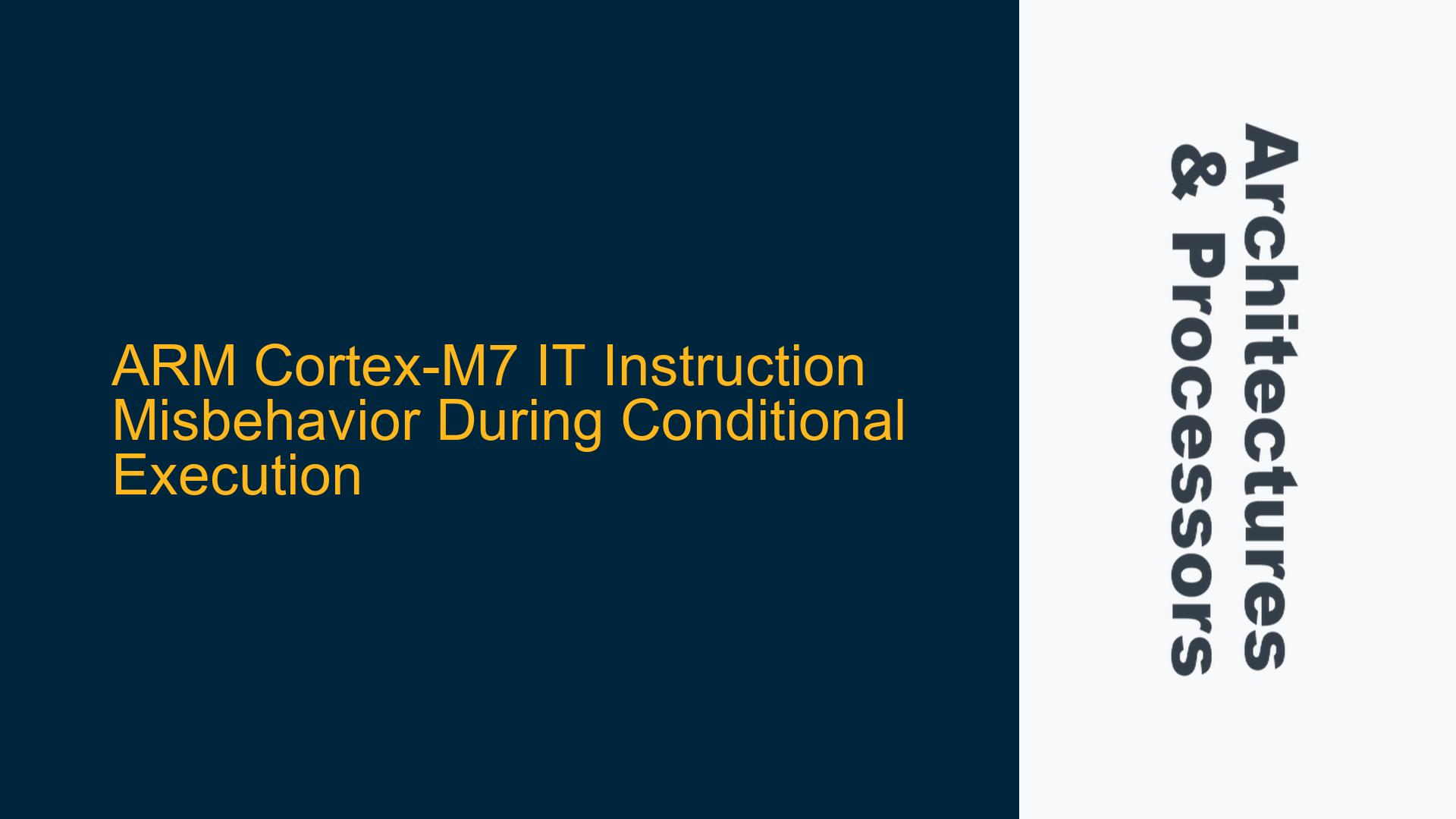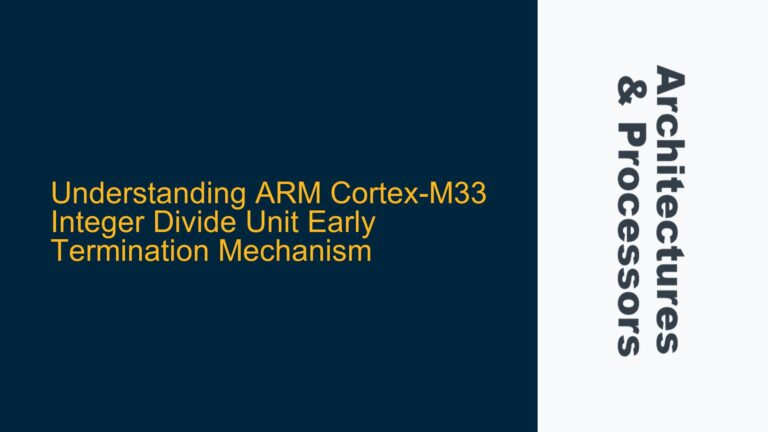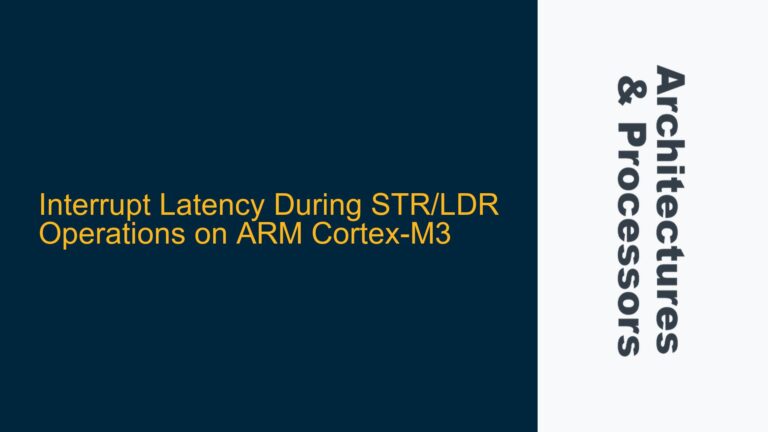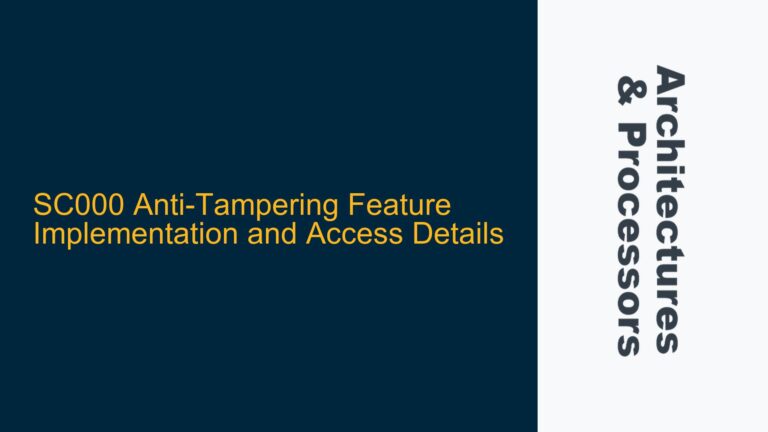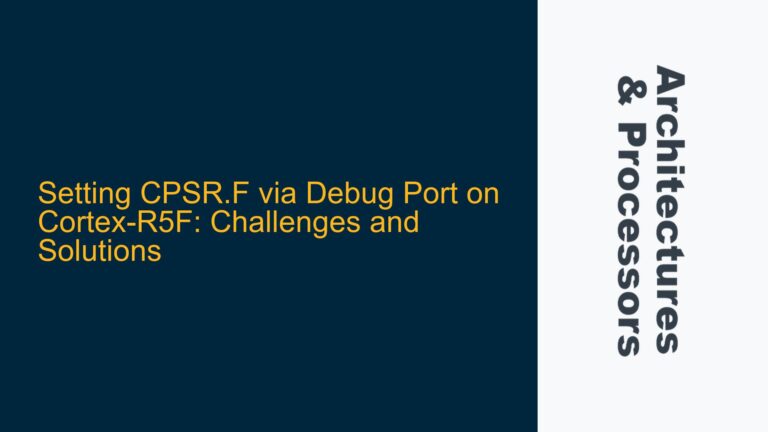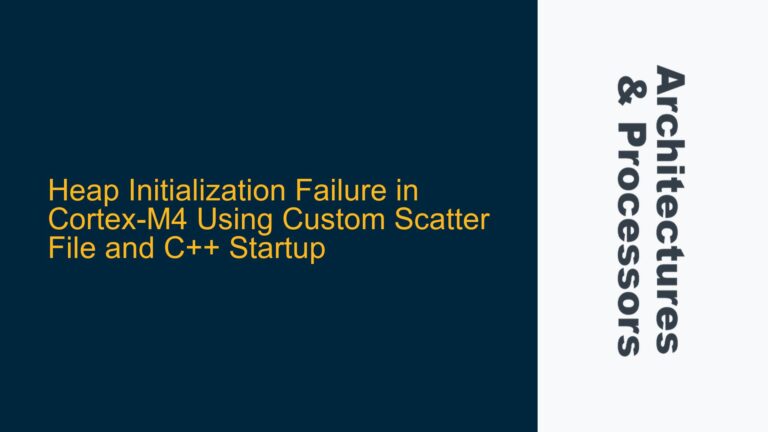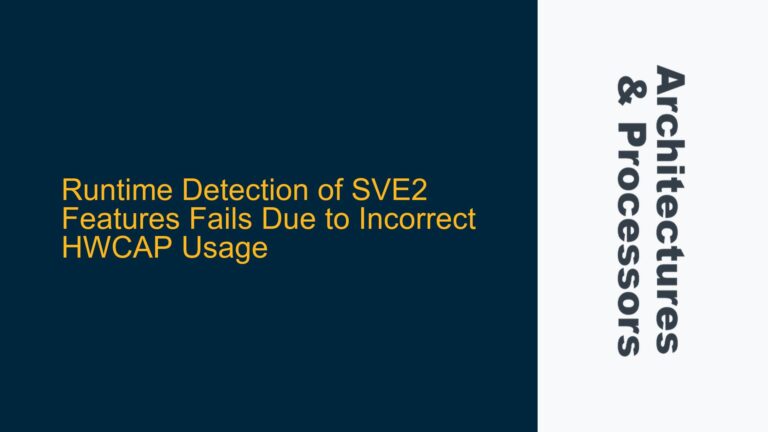ARM Cortex-M7 IT Block Misinterpretation in BSS Erasure Code
The issue revolves around the unexpected behavior of the IT (If-Then) instruction in an ARM Cortex-M7 processor during the execution of a BSS (Block Started by Symbol) erasure routine. The code in question is designed to clear the BSS section by iterating through memory regions and invoking a memset function when necessary. The IT instruction is used to conditionally execute two subsequent instructions based on the result of a comparison (cmp). However, despite the condition not being met (Z flag is set, indicating equality), the instructions following the IT block are still executed, leading to unintended behavior.
The core of the problem lies in the interaction between the IT instruction, the condition flags, and the execution flow. The IT block is intended to predicate the execution of up to four subsequent instructions based on the condition specified. In this case, the condition is NE (Not Equal), which should prevent the execution of the following instructions if the Z flag is set (indicating equality). However, the instructions are executed regardless, suggesting a misinterpretation of the condition flags or a misconfiguration in the processor’s execution pipeline.
This issue is particularly critical in embedded systems where precise control over memory initialization is essential for system stability. The Cortex-M7’s dual-issue pipeline and out-of-order execution capabilities can sometimes lead to subtle timing and sequencing issues, especially when dealing with conditional execution and memory operations. Understanding the root cause requires a deep dive into the ARMv7-M architecture, the behavior of the IT instruction, and the specific implementation details of the Cortex-M7 core.
Misaligned Memory Access and Pipeline Hazards
One possible cause of the IT instruction misbehavior is misaligned memory access during the BSS erasure routine. The Cortex-M7 processor, like many ARM cores, is optimized for aligned memory accesses. Misaligned accesses can lead to pipeline stalls, cache inefficiencies, and unexpected behavior in conditional execution blocks. In the provided code, the memory accesses involve pointer arithmetic and type casting, which can inadvertently result in misaligned accesses if the memory regions are not properly aligned.
Another potential cause is pipeline hazards related to the dual-issue nature of the Cortex-M7. The Cortex-M7 can execute two instructions per cycle under certain conditions, but this can lead to hazards if the instructions have dependencies or if the pipeline is not properly flushed before executing conditional blocks. The IT instruction relies on the condition flags being set correctly before the conditional instructions are executed. If the pipeline is not flushed or if there are unresolved dependencies, the condition flags may not be evaluated correctly, leading to the execution of instructions that should have been predicated.
Additionally, the use of the memset function pointer (memsetp) introduces another layer of complexity. Function pointers in embedded systems can sometimes lead to indirect branch prediction issues, especially in deeply pipelined processors like the Cortex-M7. If the branch predictor mispredicts the target of the memset function, it could lead to incorrect execution flow, further complicating the behavior of the IT block.
Ensuring Proper Alignment and Pipeline Synchronization
To address the issue, the first step is to ensure that all memory accesses in the BSS erasure routine are properly aligned. This can be achieved by using aligned data types and ensuring that the memory regions being accessed are aligned to the natural boundaries of the data types being used. For example, if the code is accessing ptrdiff_t and size_t values, the memory regions should be aligned to 4-byte or 8-byte boundaries, depending on the size of these types.
Next, it is essential to ensure proper pipeline synchronization before executing the IT block. This can be done by inserting a DSB (Data Synchronization Barrier) or ISB (Instruction Synchronization Barrier) instruction before the IT block. These barriers ensure that all previous memory accesses and pipeline operations are completed before proceeding with the conditional execution. This can help prevent pipeline hazards and ensure that the condition flags are evaluated correctly.
Additionally, the use of the memset function pointer should be carefully reviewed. If possible, replace the function pointer with a direct call to memset to eliminate any potential branch prediction issues. If the function pointer must be used, consider using a BLX (Branch with Link and Exchange) instruction to ensure that the branch target is correctly predicted and executed.
Finally, it is crucial to verify the correctness of the IT block by single-stepping through the code and inspecting the condition flags at each step. This can be done using a debugger with support for ARM Cortex-M7 processors. By carefully inspecting the condition flags and the execution flow, it is possible to identify any discrepancies and ensure that the IT block is functioning as intended.
In conclusion, the unexpected behavior of the IT instruction in the Cortex-M7 processor during the BSS erasure routine is likely due to a combination of misaligned memory accesses, pipeline hazards, and potential branch prediction issues. By ensuring proper alignment, pipeline synchronization, and careful use of function pointers, it is possible to resolve the issue and ensure correct execution of the IT block.
